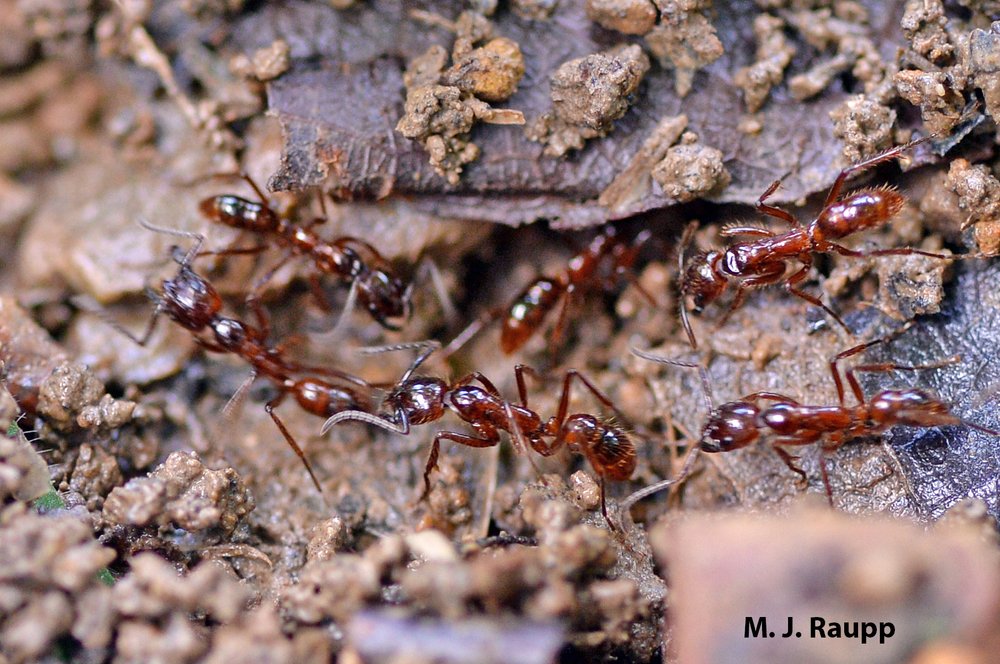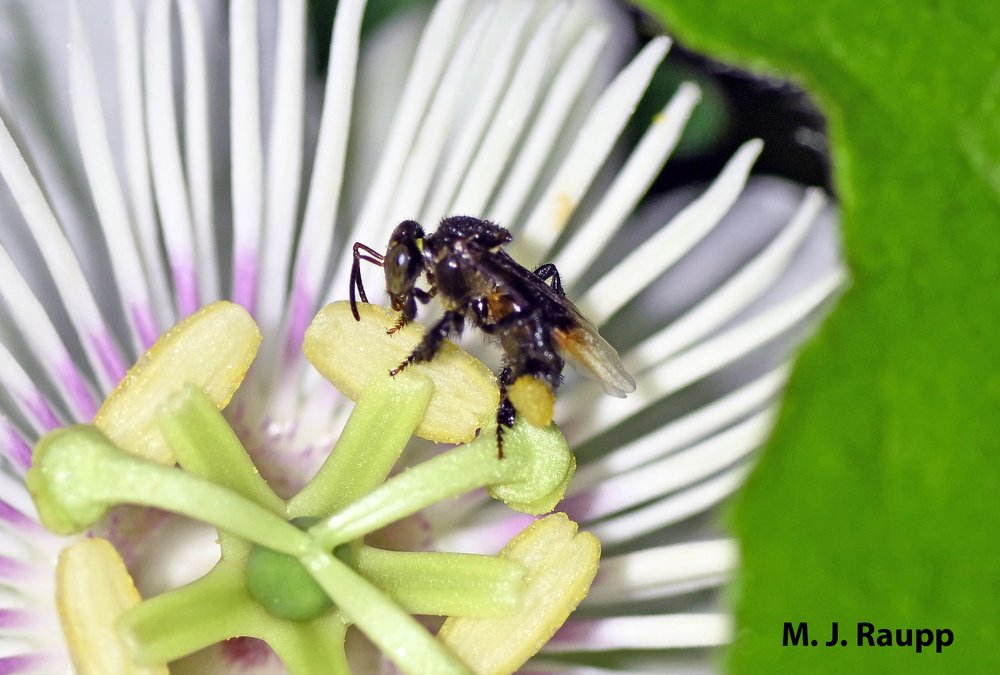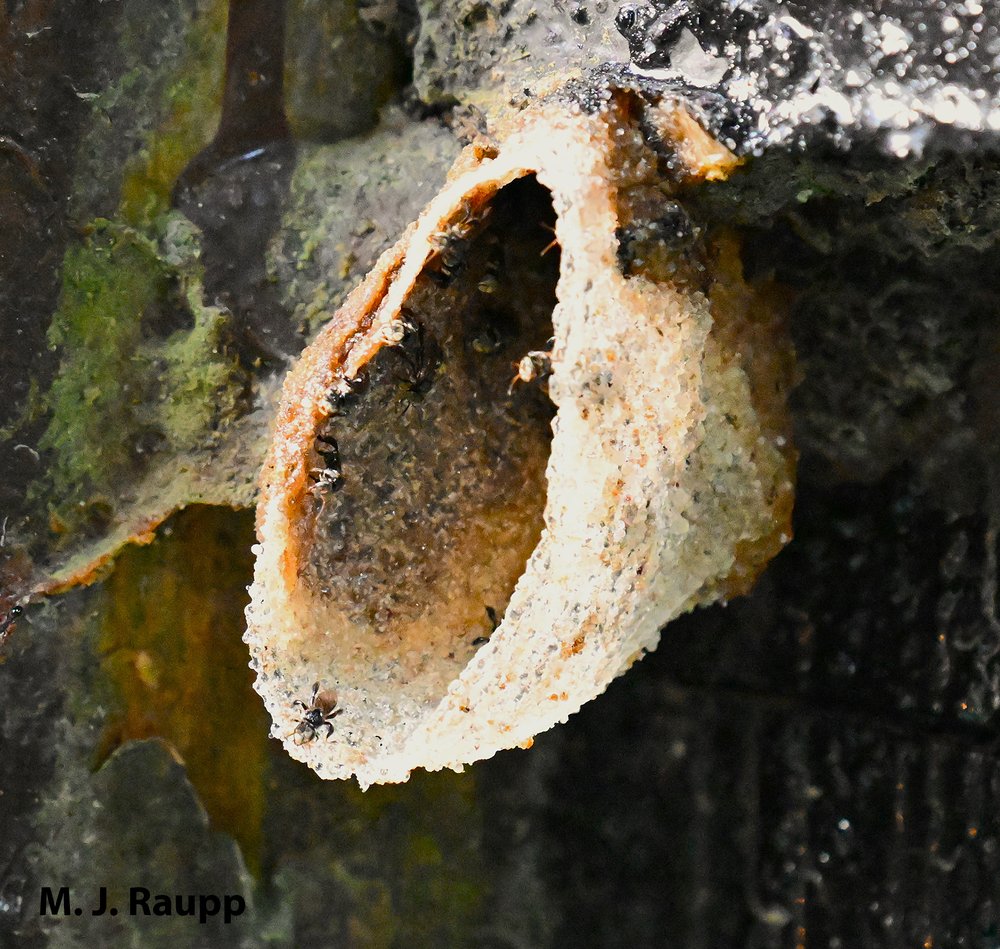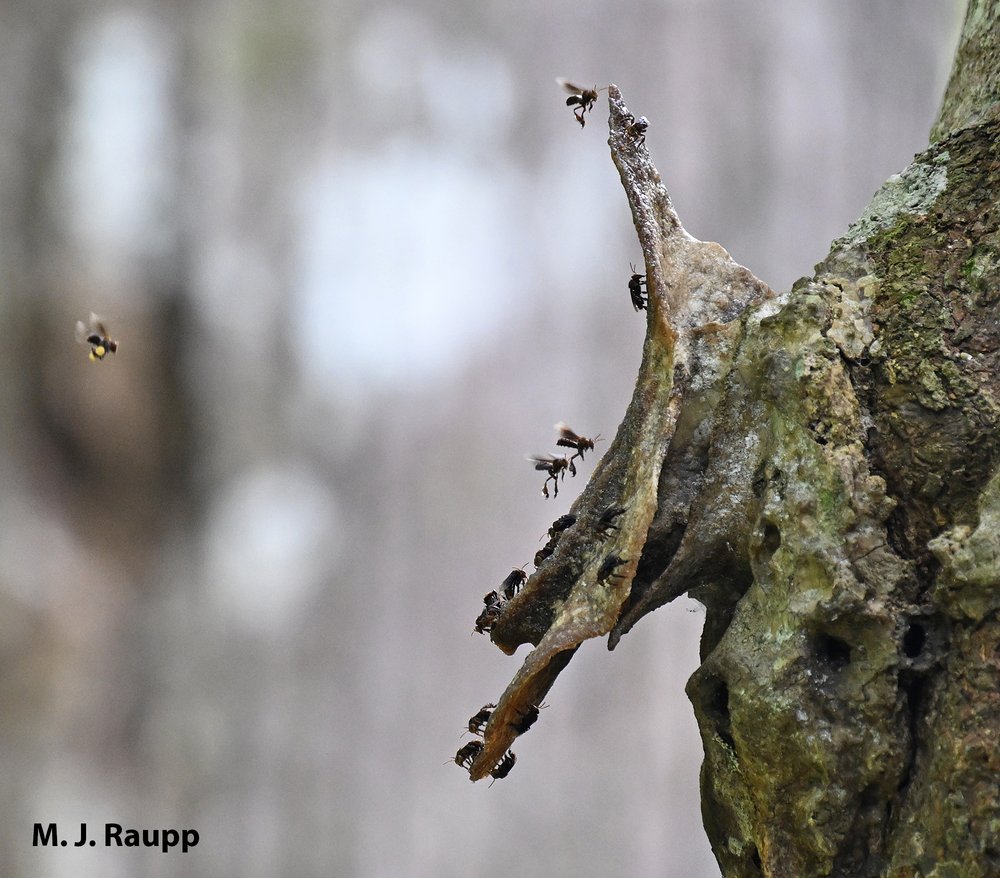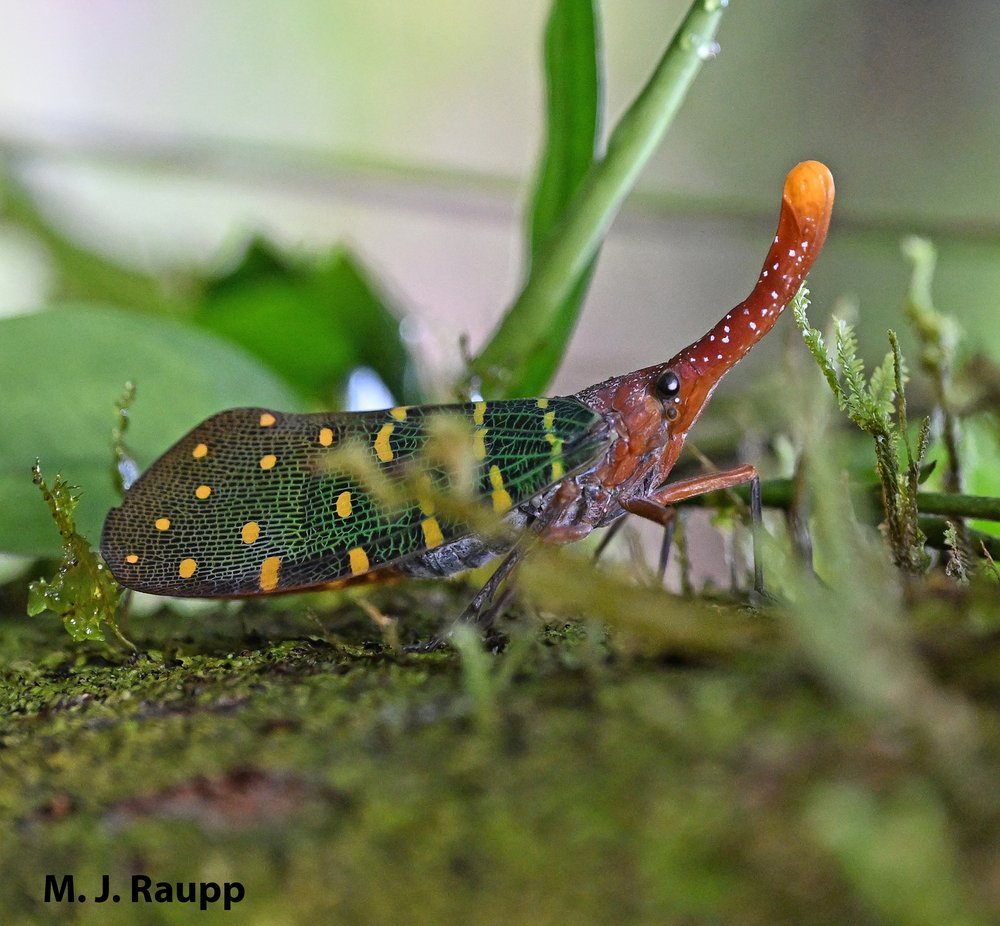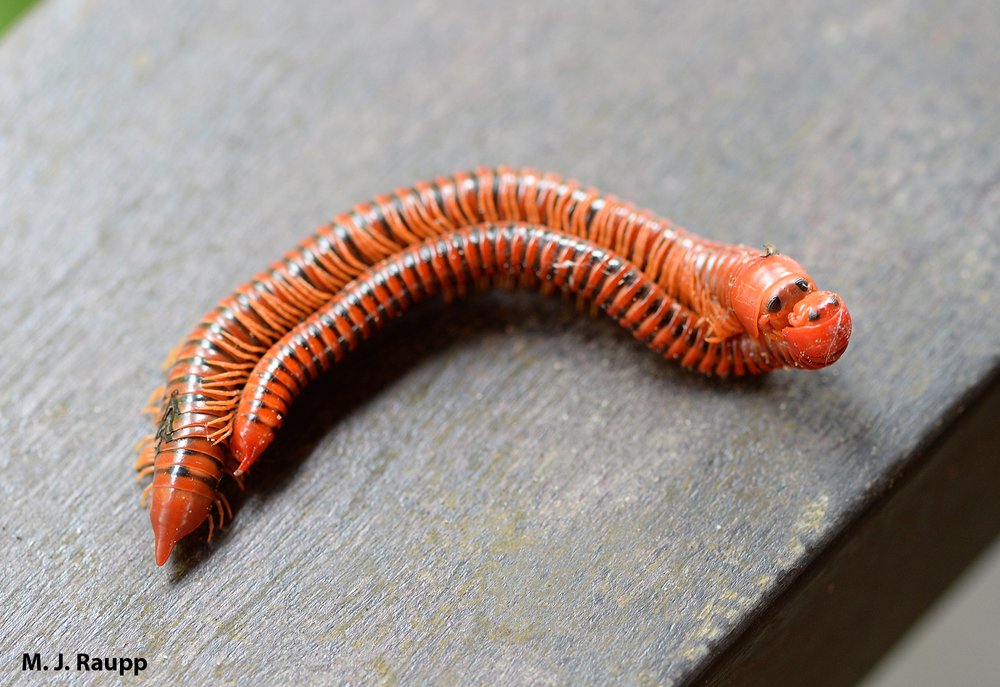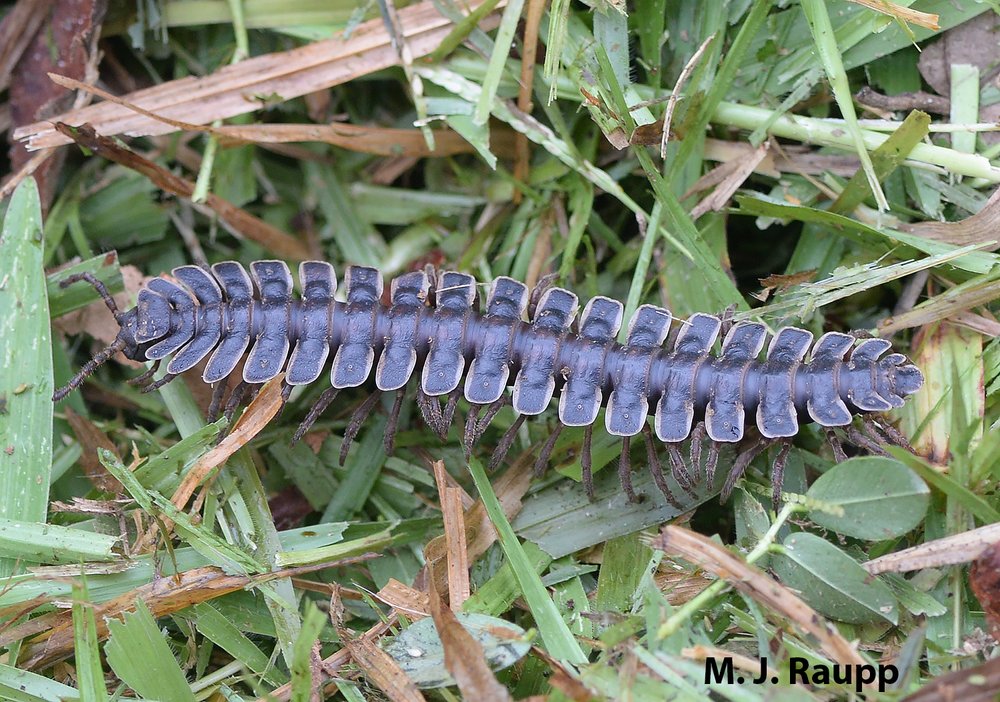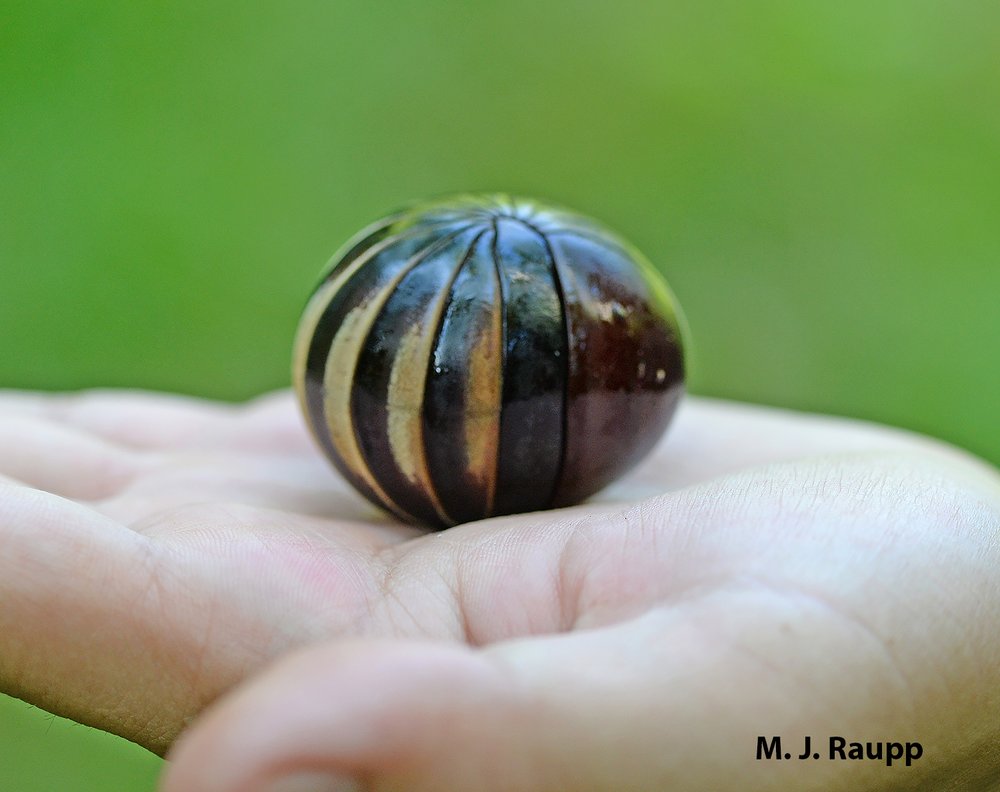Sorry DC and Baltimore, no periodical cicadas for you this year, unless you take a road trip: Brood XIII (13) and Brood XIX (19), Magicicada spp

Holes about the size of dimes beneath trees appearing in March and April foretell the emergence of periodical cicadas.
This week we interrupt our six-legged adventures in Borneo and return to North America, to learn about all the hubbub surrounding the emergence of periodical cicadas. Last week Bug of the Week was bombarded with fearful and hopeful questions about the appearance of periodical cicadas here in the DMV. Cicadaphiles are eagerly anticipating an emergence, but irate entomophobes have called me out like this, “… but back in 2021 you told us they only come out every 17 years! Now, I have to get out of town again.” People have also heard that there is a “double brood” occurring this year. Does twice as much anguish or joy loom ahead for us in the DMV? Not so much, here is what will happen.
2024 is the year that the ginormous Great Southern Brood, Brood 19, will emerge from extreme Southern Maryland in a broad swath that ranges south to Mississippi, west to Texas, and north to the central U.S. This is arguably the largest brood of periodical cicadas in the U.S., right up there with Brood 10 which we enjoyed in our region in 2021. Brood 19, The Great Southern Brood, is fascinating and is comprised of four species of periodical cicadas which emerge every thirteen years. Also this year, the Northern Illinois Brood, Brood 13, will appear in a handful of midwestern states. Brood 13 is comprised of three species that emerge every 17 years. In a few locations in Illinois, Brood 19 and Brood 13 are expected to emerge simultaneously with seven species in total, producing one heck of a cicadapalooza and a fascinating biological event. The last time this happened with Broods 13 and 19 was 13 X 17 = 221 years ago, way back when the Louisiana Purchase brought a whole bunch of new territory to our growing nation.

Map of current known distributions of periodical cicada broods in the Mid-Atlantic. Source: https://www.cicadas.info/?page_id=96
What does the co-emergence of two broods in the same location mean? Will there be double the number of cicadas causing joy and terror? Will egg-laying damage in orchards, tree nurseries, and landscapes be dreadful and elevated? Will birds and small insectivorous mammals feast and enjoy greater survival and reproduction and will regular food items like caterpillars get a real break from beaks and toothy jaws? And will cicadas from Broods 13 and 19 mate and hybridize, resulting in who knows what? A fantastic ecological and evolutionary experiment brought to us by periodical cicadas and Mother Nature awaits us, if, indeed, there is significant overlap of the two broods. But let’s circle back to Brood 19 and cicadas in the DMV. Back in 2011, the last time Brood 19 visited our region way down in St. Mary’s County, Bug of the Week went on a quest to commune with periodical cicadas. The following is an excerpt from that episode posted in the spring of 2011 when the emergence of Brood 19 was underway.

Billions of cicada nymphs from Broods 19 and 13 will emerge in more than 15 states in the US this spring.
“As a cicada lover, I was more than a little jealous of our neighbors in southern and central states that were able to witness this amazing event. Fortunately, a couple of weeks ago, I began hearing reports of cicadas emerging in St. Mary’s County here in Maryland. These reports were confirmed last week when intriguing images of periodical cicadas arrived in my email. Upon closer examination of the distribution map of Brood XIX, one remarkable location was an outlier to the other populations of the Great Southern Brood, a tiny speck in St. Mary’s County. One major concern and oft discussed aspect of periodical cicada lore is their declining range. During the history of human occupation of North America, several localized broods of cicadas have disappeared, gone extinct. In his classic treatise on the biology and ecology of periodical cicadas, C. L. Marlatt mentioned the disappearance and shrinking distributions of several cicada broods in the United States. Experts suggest that fragmentation and elimination of cicada habitat due to farming and urbanization may be linked to vanishing cicadas in some locations. So, to witness this brood of magnificent creatures that may someday wink out of existence in Maryland, I loaded up my car with camera gear and set off in search of Maryland’s Brood XIX – the St. Mary’s survivors. After a disappointing search that consumed most of one day and yielded a single sighting, I was richly rewarded two days later with the otherworldly songs of thousands of cicadas in treetops festooned with egg-laying females and courting males near the small hamlet of Dameron in southern St. Mary’s County.
The life of a cicada is mysterious and precarious. When their development is nearly complete in spring, they construct an escape tunnel to the surface of the earth. Soil temperatures in the middle sixties seem to be a signal that the world above ground is warm enough to support flight and reproduction. Many nymphs emerge at night and make a mad dash for vertical structures such as trees and shrubs, however, lampposts, street signs, and slowly moving people seem to work just as well. After climbing up and away from the soil, they attach to a firm object to begin the process of molting. Their outer skin or exoskeleton splits along a predetermined line on their back and the beautiful adult cicada wiggles free from the shell. The freshly molted adult is almost pure white except for bright red eyes and patches of black behind the head. Before its skin hardens, the cicada must expand its wings or it will be unable to fly and seek a mate. After wings and legs have hardened, cicadas scurry or fly to the treetops. Emergence from the earth and the final molt are perilous times for cicadas. Many cicadas survive interment underground for thirteen years only to perish attempting to molt or while trying to reach the safety of the trees.
During winter, periodical cicadas are still deep underground where they feed on plant roots. In late winter and early spring, their presence will be marked by exit holes beneath trees. Fully developed nymphs will take a peek at the world above ground before emerging when soil temperatures are in the mid-sixties. They will ascend vertical structures like trees and shed their exoskeletons to become adults. To the treetops they climb to chorus and mate during May and June. After mating, females deposit eggs in small branches. Eggs hatch into the next generation of cicadas destined to emerge with their brood-mates in 13 or 17 years.

Male cicadas produce their otherworldly sounds by vibrating a tymbal organ on their abdomen.
Male cicadas have evolved a unique structure called a tymbal. These paired organs are located on the sides of their bodies just beneath the wings. The tymbal is vibrated much like a drumhead to produce sound. Males produce a variety of calls for different purposes. If threatened by a predator such as a bird or a squirrel, a loud squawking noise is made in an attempt to startle the predator and make an escape. The principal function of the tymbal is to produce calls that assist in finding a mate and winning her affection. One type of call attracts both males and females to a common assembly place such as a large tree. When guys and gals get eye to eye, the male will use three distinct and different courtship songs to try and convince the gal that he should be the father of her nymphs. If the lady likes his advances, she will signal her approval by flicking her wings with an audible click.
After mating, the female cicada will move to tender young branches to lay eggs. Using a saber-like structure on her abdomen called an ovipositor, the female gouges groves into the woody tissue and lays 20 to 30 eggs in an egg nest. This process is repeated on one or more plants. Females lay as many as 600 eggs. After incubating for more than a month, eggs hatch and tiny nymphs a few millimeters long dive to the earth beneath the tree. In a matter of minutes, they burrow into the soil, find roots, and insert a small straw-like proboscis into the roots. Cicada nymphs hunker down underground sipping sap and slowly growing larger. Despite what you might have heard, cicadas are not blind. Their red eyes see fine. They do not bite, although, if very thirsty, one may probe you a bit with its tiny beak in search of moisture.

Female cicadas use a sharp, tubelike appendage called an ovipositor to slice small branches into which they deposit a cluster of eggs.
Cicadas have survived in North America for millions of years. Early records of cicadas date back to colonial times. A report from the April 3, 1751 edition of the Maryland Gazette noted that “We are informed from many Places, that the Caterpillars appear already in vast numbers, and in some Places the Locusts have been found in great plenty, just under the surface of the Earth, almost at their full growth: May God avert our impending Calamities.” Well, we all know that locusts are not really found “just under the surface of the earth,” but in April cicadas ready to emerge would be found in droves. If you do the math, it is most likely that the locusts in this report were really the fully developed nymphs of Brood XIX cicadas ready to make their appearance. How marvelous! So, let’s hope that 2011 is another successful season for St. Mary’s survivors and, that in 260 years after another 20 broods, these wonders of nature will still be with us. Fingers crossed that a return to St. Mary’s County this spring will find Brood 19 alive and well having survived another 13 years.
Acknowledgements
Bug of the week thanks our friends at the Weather Channel for providing the inspiration for this episode. Paula Shrewsbury helped hunt and wrangle cicadas and provided images. The marvelous references “The periodical cicada” by C. L. Marlatt, “Reproductive character displacement and speciation in periodical cicadas, with description of a new species, 13-year Magicicada neotredecim” by D. C. Marshall and J. R. Cooley, and “Advances in the Evolution and Ecology of 13- and 17-Year Periodical Cicadas” by Chris Simon, John R. Cooley, Richard Karban, and Teiji Sota were used to prepare this episode. To learn more about these really cool insects, please visit the following websites:
This post appeared first on Bug of the Week
